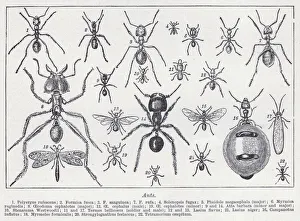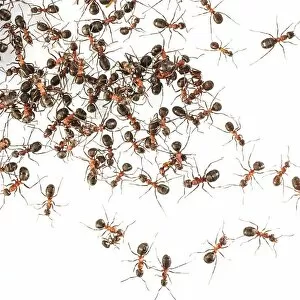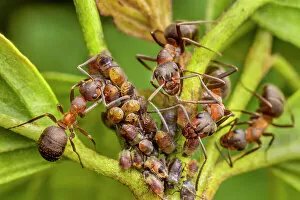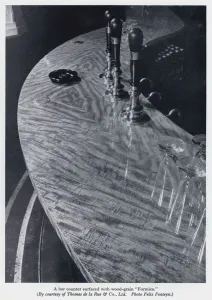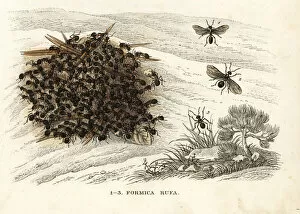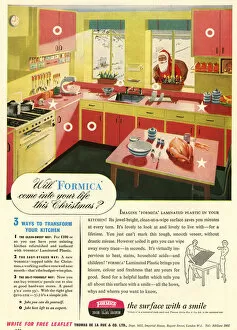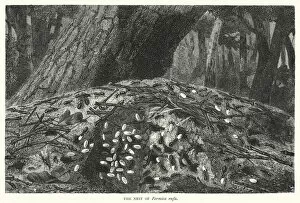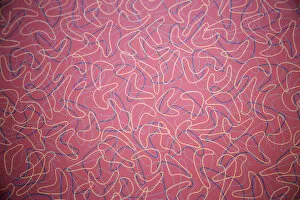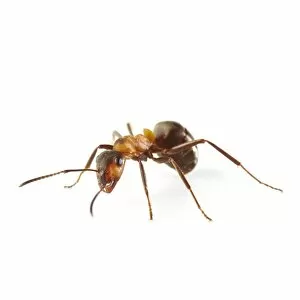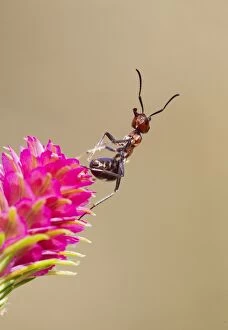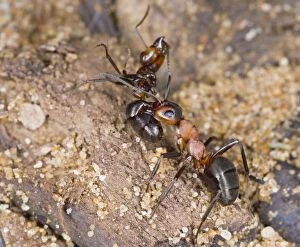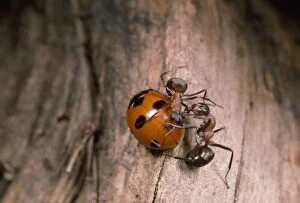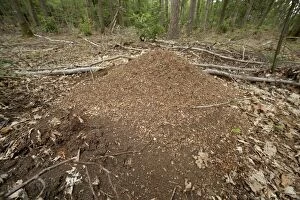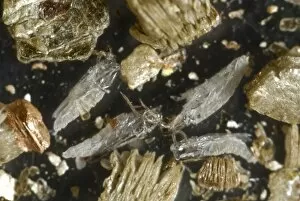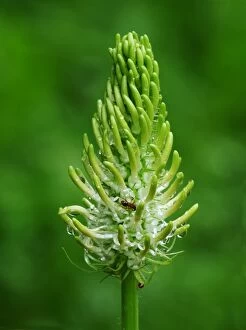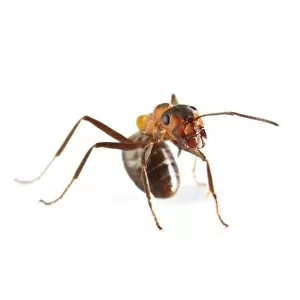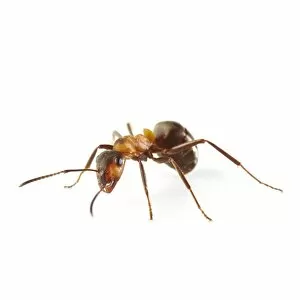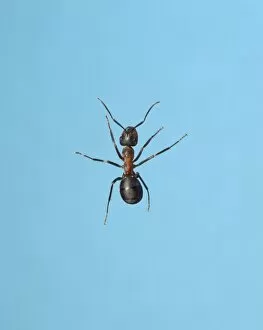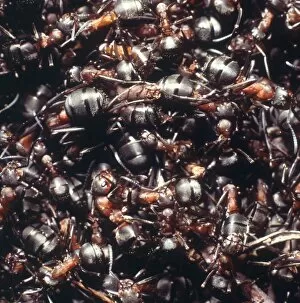Formica Collection
"Discovering the Fascinating World of Formica: From Ants to Countertops" Formica, commonly known as ants in litho
All Professionally Made to Order for Quick Shipping
"Discovering the Fascinating World of Formica: From Ants to Countertops" Formica, commonly known as ants in litho, have captivated scientists and nature enthusiasts for centuries. Among them, wood ants stand out with their intricate behaviors and unique interactions with other species. One remarkable example is the Northern hairy wood ant (Formica lugubris) workers milking aphids for honeydew. With delicate strokes of their antennae on the aphid's back, these industrious ants stimulate the production of a droplet of sweet honeydew. Collecting this precious resource has become an essential part of their daily routine. In human environments, Formica takes on another meaning - a bar counter surfaced with wood-grain "Formica. " This black and white photo captures the timeless elegance that this material brings to any space. The world encompasses various ant species and their fascinating nests. The red wood ant or southern wood ant (Formica rufa) is one such variety that thrives in forests across different regions. Their presence adds vibrancy to ecosystems while playing crucial roles in maintaining balance. Even historical records showcase our long-standing relationship with Formica. An advertisement from Christmas 1953 highlights a beautiful Formica kitchen, emphasizing its durability and style – a testament to its enduring popularity throughout time. Artistic depictions like Curtis British Entomology Plate 752 further demonstrate our fascination with these creatures' intricacies. Engravings depicting the nest structure rufa provide insight into their complex social organization and architectural skills. Beyond ants alone, Wood ants are often found engaging with other organisms within their habitat. A striking image shows a Wood ant perched atop Waxcap fungus in Buckinghamshire, England – showcasing how they interact within diverse ecosystems. From humble insects diligently tending aphids to iconic countertops adorning kitchens worldwide, exploring the multifaceted world reveals a captivating tapestry of nature's wonders and human ingenuity.

